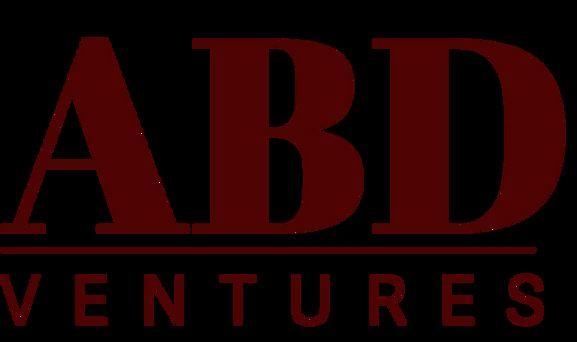
What Is Needed to Build a Human-Centered Workplace at Santa Clara Valley Transportation Authority - VTA?
Essential Capacities & Conditions For Healthy Workplace Culture
Report & Primer, August 2024

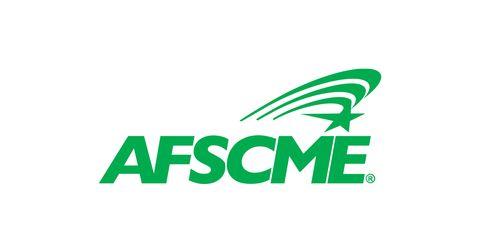
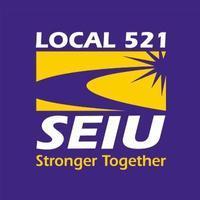
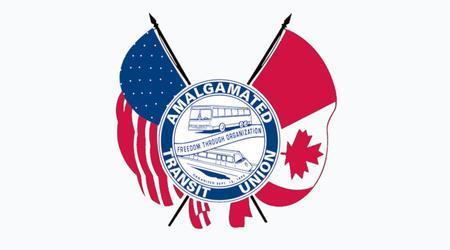
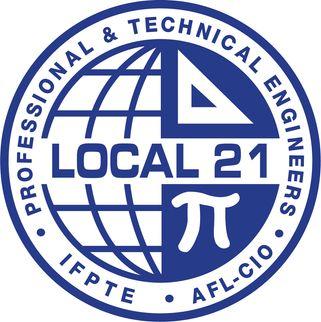






What Is Needed to Build a Human-Centered Workplace at Santa Clara Valley Transportation Authority - VTA?
Report & Primer, August 2024









ByRobinSurmont
Flowersareforaveryspecialday
Sometimesbetterthanwhatonewouldsay
Foreachtypeofflowerthereisameaning
Studyingthemcloseyouʼllthinkyouaredreaming
Theywillcarryyouaway,nottoofar.
Abigpictureofyourlife,whichispar.
Forme,thereisoneabovecreation
Atruepictureoflife,apinkcarnation
Throughthelonggreenstemflowsbloodofliving
Flowingsteadily,nevergiving
Toallthosethingsoflife
Whichcouldbring griefandstrife.
Intheendcomestheflower
Theblossomofliving,externalpower
Issuingascentofhumankind
Sostrong,butgentle,pleasingtothemind
Pulsatingpinkbeyondexpectation
Mylifeʼsbloodinthepinkcarnation!

Inthetwilightoftraditionalleadership,abus driver'spoignantverseechoesthroughthehallsof theSantaClaraCountyValleyTransitAuthority: WhereHaveOurGreatLeadersGone?1
ByDavidLawrence
Throughouthistorywehavealwaysbeensavedby GreatleadersdevotedtoRight NowitseemsthatmoneyistheironlyGod Haveallgreatleadersdiedaway? Istherenoonetofilltheirspace? Hasthewellofgreatleadersdriedup andleftnoonetosavethisplace?
InsolemnremembranceofthenineVTAemployeeswhoseliveswere tragicallycutshortonMay26,2021,andinacknowledgementofthe profoundanguishthatledthetenthtosuchadevastatingact.
Maytheirmemoryinspireustoforgeaworkplacewhereeveryvoice isheard,everylifeisvalued,andnoonefeelsthatviolencebecomes ananswer.
ThisreportisdedicatedtotransformingVTAintoabeaconofsafety, dignity,andmutualrespect-atestamentthatfromourdarkesthour, wecancreateabrighter,morecompassionatefuture.
Neveragainshallweallowsilencetobreeddesperation. Neveragain shallweoverlookthesignsofdistressamongus.
Together,wecommittobuildingaculturewheresuchtragedyis unthinkable-whereleadershipmeansliftingeachotherup,and whereeveryemployeefeelsseen,heard,andintegraltoashared mission.
Intheirmemory,wemoreforward, Forourfuture,wetransform.
Ourjourney,initiatedinMarch2023,beganwithafundamental question:HowcanVTAevolvefromcommand-and-control structurestoamodelofadaptive,collaborative,andemotionally intelligentleadership?Thisshiftisn'tarejectionofVTA'spast,but anecessaryevolutioninresponsetoourcomplex,interconnected world. AsweprobedVTA'sorganizationalfabric,weencountered resistanceandskepticism.Ourquestionsoftentouchedrawnerves inasystemunaccustomedtosuchscrutiny.Yet,asPeterSenge noted,"Peopledon'tresistchange.Theyresistbeingchanged." ThisdiscomfortsignalspotentialforgrowthSenge,2010.
We'vebeenhumbledbythededicationofunionleadersandunion members,who,despitereservations,engagedwholeheartedlyin VTAʼsclimateandculturechangeeffort.Theirdiverse perspectives—sometimesharmonious,oftendiscordant-havebeen itslifeblood. Weacknowledgethatunanimityisneitherpossiblenor desirable;trueinnovationisforgedinthecrucibleofdiffering viewpoints.
Thisreportandprimerserveasbothreflectionandcatalyst. Itisan invitationtolearn,grow,challengeassumptions,andreimagine leadershipin21st-centurypublictransit.Itdistillsinsightsfrom15 monthsofintenseengagement.Bypresentingbothanalysisand possibilities,weaimtosparktheconversationsandideasthatwill contributetoshapingVTAʼspathforwardsoitcandevelopabroadly sharedvisionacrossallofitsstakeholders.
Publictransitisaboutmorethanmovingpeople;it'sabout connectingcommunities,drivingeconomicgrowth,andshaping urbanlife.Theleadershiprequiredmustbeasmultifacetedand dynamicasthecommunitiesVTAserves.
Tothebusdriver'spoignantquestion:“No,greatleadershaven't goneaway.They'reherewithinVTA,waitingtobeempowered, nurtured,andunleashed!ˮ
Thejourneyaheaddemandscourage,resilience,andawillingness toembracediscomfortasaprecursortogrowth. Letusembarkon thisjourneytogether,notasmanagersandemployees,consultants andclients,butasco-creatorsofabrighter,moreconnectedfuture forSantaClaraCounty.
Theroadislong,butthedestinationisworththejourney.
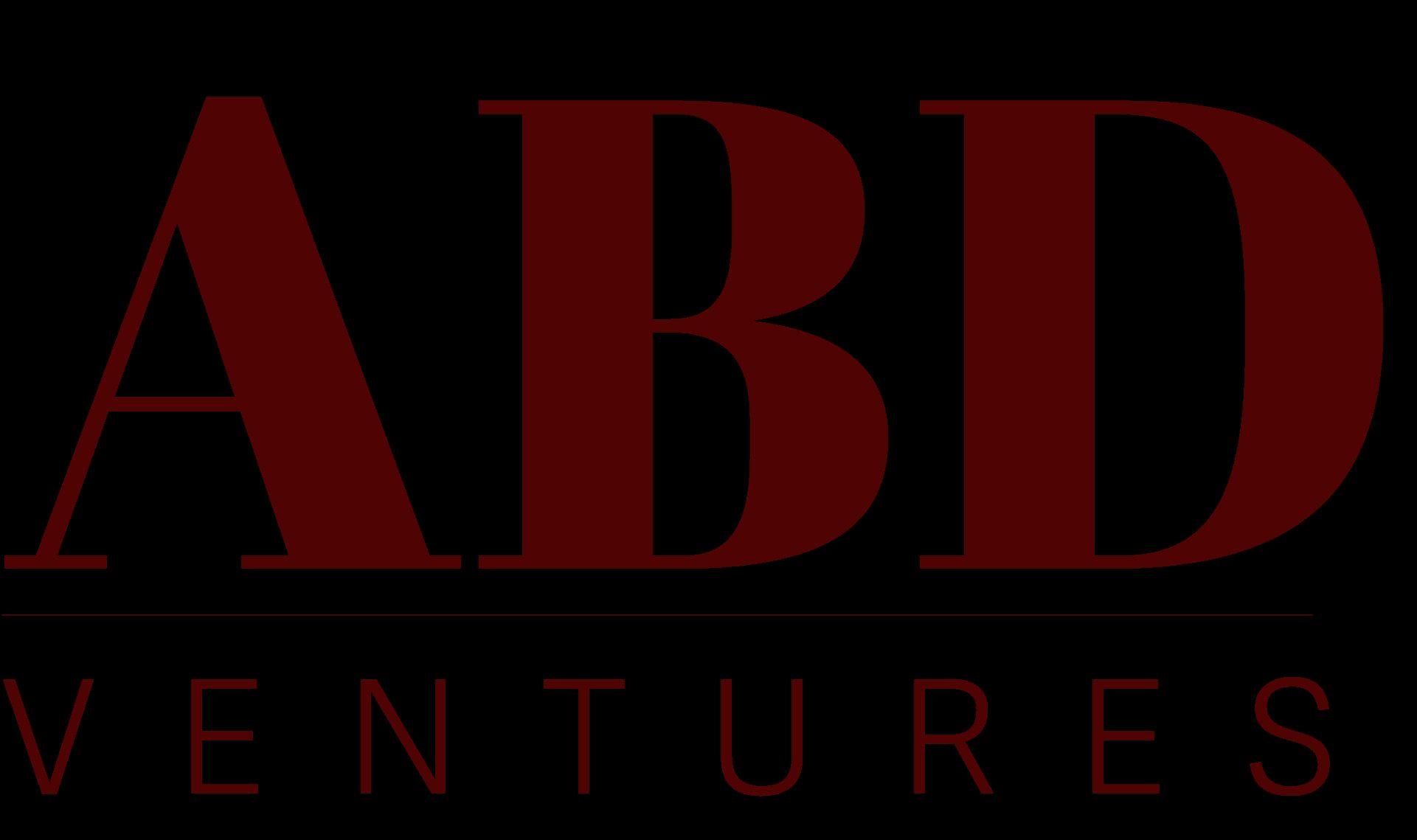
ABDVENTURESLLCisaboutiquecoachingandconsultingfirmthatspecializesinorganizationdevelopmentandculturechange, leadershipperformance,managementeffectiveness,andmulti-stakeholdercollaboration.Since2011,wehavespearheadedthe design,facilitation,andimplementationofmultipleenterprise-wide,large-scalecomplexchangeinitiatives.
Ourapproachdrawsonnarrativeinquiryandquantitativeresearchmethodsempoweringourclientstocrafttailoredsolutionsthat integratethelivedexperiencesandthemeasurablerealitiesoftheirorganizationallandscapes.Bycombiningsystemsthinkingwith collaborativecapacitybuilding,wesupportleadersnavigatethehumandynamicsneededinordertofosterbridgingdivides betweendiversestakeholderstocultivatecollaborativeandadaptivechange.
ABDVENTURESbringsdistinctexpertiseinlabor-managementrelations,withnuancedinsightintothechallengesand opportunitieswithinunionizedenvironments.Ourteam'sdualbackgroundinmanagementconsultingandlaboradvocacyoffersa uniquevantagepoint,enablingustobuildtrustandfacilitatesubstantivedialogueacrosstraditionalorganizationalboundaries. We'recommittednotonlytoimplementingchange,buttocultivatingourclients'internalcapacityforongoingadaptiveleadership. Ouraimistofosterhuman-centered,resilient,andhigh-performingorganizationsequippedtoflourishintoday'sdynamicbusiness landscape.
Tragedyoftencatalyzesorganizationaltransformation,compellinginstitutionsto confrontdeep-seatedissues.
TheSantaClaraValleyTransportationAuthorityVTA)facesthis imperativeintheaftermathofaworkplacecrisisthatshookits foundations.
Thisreport,"BuildingtheCapacitiesandConditionsforaHealthyWorkplace Culture,"servestwo purposes:
● ChroniclesVTA'sinitialstepstowardtransformation
● Providesaroadmapforthechallengingpathahead
Atitscore,thisdocumentisacalltoaction.Itrecognizesthatmeaningfulchange transcendssuperficialpolicyadjustments,demandingafundamentalreimaginingof thecapacitiesandconditionsshapingorganizationalculture.
Weassertthatworkplacehealthismeasurednotjustbyoperationalmetricsor publicperception,butbythelivedexperiencesofeveryindividualwithinthe ecosystem.
Weopenwithaprefaceonleadership,exploringessentialqualitiesforguiding organizationsthroughchange.Thissectionchallengesconventionalleadership notions,advocatingforamodelbasedonhumility,emotionalintelligence,and collaboration. Thecapacitiesandconditionsnecessaryforcultivatinga healthyworkplaceculture.
Weexaminethecapacitiesandconditionsnecessaryforahealthyworkplace culture.Sustainablechangerequiresdevelopingspecificorganizational‘musclesʼ and‘mindsetsʼlikepsychologicalsafety,systemsthinking,adaptiveleadership, andinclusivedecision-making.Thesecapacitiescreatefertilegroundforpositive culturechange.
Weshareourexperiencesaschangeconsultantsworkingwithlaborunionsat VTA.Thissectionoffersinsightsintonavigatingthecomplexlandscapeand drivingchangewithinaresistantsystem. Reflect,Reset,Reinvest.
WeprovideacandidassessmentofVTA'schangeefforts.Reflectexaminesinitial shortcomingsandmissedopportunities.Resetproposesstrategicpivotsbased onbestpractices.Reinvestcallsforrenewedcommitmenttotransformation, emphasizingaccountabilityatalllevels.
Whatarethe essential capacitiesneeded tobuildamore human-centered workplaceat VTA?

Culturechangeisnotmerelyaboutimplementingnewpolicies orrestructuringorganizations.
Whiletheseelementsplayaroleinsupportingtransformation, trueculturalshifthingesondevelopingnewcapacitiesand fosteringconditionsconducivetochange.
Atitscore,culturechangeisaboutnurturingcontinuous learning,instillingaccountability,embracingsystemsthinking, andcultivatingsharedvisionandalignment.
Itrequirescreatinganenvironmentofpsychologicalsafety whereinnovativeideascanflourishandcollaborative processescanthrive.
Byfocusingonthesefundamentalcapacitiesandconditions, organizationscancatalyzegenuine,sustainablecultural transformationthatgoesfarbeyondsurface-level adjustments.

Inthecrucibleoforganizationalchange,psychologicalsafetyisn'ta luxury—it'stheveryairthatinnovationbreathes.It'stheinvisible forcethattransformstimidwhispersintoboldideas,andhesitant stepsintodaringleaps.
Whenemployeesfeelsafetoexperiment,takerisks,andvoice dissentingopinions,theentireorganizationalecosystemthrives.
Thissafetynetcatchesfailedattemptsandreframesthemas valuablelessons,fosteringaculturewhere'mistakes'become steppingstonestobreakthroughs.
Opencommunicationflowslikelifeblood,nourishing problem-solvingcapabilitiesandfeedingacollectiveappetitefor continuousimprovement.
Inthisenvironment,changeisn'tfeared—it'sembracedasan exhilaratingjourneyofcollectivegrowth.Psychologicalsafety doesn'tjustfacilitatechange;itacceleratesit,turningeveryteam memberintoanagentofinnovationandeverychallengeintoan opportunityfortransformativesuccess.
The

Breakingdownsilosisn'tjustbeneficial—it'simperative.True organizationaltransformationthrivesonthealchemyof cross-functionalcollaboration.
Byestablishingshareddecision-makingstructuresandjoint problem-solvingforums,weforgeaneworganizationalparadigm.
Thiscollaborativeapproachdoesn'tmerelyalignstakeholders;it createsaneuralnetworkofdiverseperspectives,eachsynapsing withotherstosparkinnovation.
Astrustbuilds,sodoesthecapacityforgeneratingholistic solutionsthattranscenddepartmentalboundaries.
Inthisecosystemofsharedresponsibilityandcollective intelligence,challengesbecomeopportunitiesforunifiedprogress.
Collaborationisn'tjustaprocess—it'sthelifebloodofadynamic, adaptiveorganization,turningindividualexpertiseintocollective wisdom,andfragmentedeffortsintoasymphonyoforganizational excellence
TheCapacitiesand ConditionsEssentialfor BuildingHealthy WorkplaceCulture

Inthecrucibleoforganizationalchange,accountabilityemergesas thelinchpinofsuccess.
It'snotmerelyaboutassigningtasks;it'saboutweaving responsibilityintotheveryfabricoftheorganization.
Fromtheboardroomtothefrontlines,eachindividualmustgrasp theirroleasanarchitectofchangeandstandanswerablefortheir contributions.
Thisuniversalownershiptransformsabstractplansintotangible progress.Withoutit,eventhemostbrilliantlycraftedstrategies crumble.
Trueaccountabilityignitespersonalinvestment,fuelscollective momentum,andensuresthatculturaltransformationisn'tjustan aspiration,butalivedreality.
Itturnseveryteammemberintoastakeholder,everychallengeinto asharedmission,propellingtheentireorganizationtowardsits reimaginedfuture.
TheCapacitiesand ConditionsEssentialfor BuildingHealthy WorkplaceCulture

Culturerenovationthrivesonperpetualevolution.
Successfultransformationsarefueledbyagrowthmindset,where leadersandemployeesalikeembraceongoinglearningasacore value.
Thisapproachallowsfornimbleadjustmentstoemerging challengesandintegrationofhard-woninsights.
Unlikerigidchangeinitiativesthatoftenfalter,acultureof continuouslearningcreatesanadaptive,resilientorganization capableofturningobstaclesintoopportunities.
It'snotjustaboutacquiringknowledge—it'saboutfosteringan environmentwherecuriositydrivesinnovation,failureinforms progress,andeveryexperiencebecomesasteppingstoneto organizationalexcellence.
TheCapacitiesand ConditionsEssentialfor BuildingHealthy WorkplaceCulture

Acompelling,widelyembracedvisionisthecornerstoneof effectiveculturetransformation.
Weadopttheterm"culturerenovation"tounderscorethedynamic, ongoingnatureofreshapingVTA'soperationalethos.
Thisrenovationdemandsleadershipthatnotonlyarticulatesaclear visionbutembodiesit,championingdesiredbehaviorsand institutingrobustfeedbackloopsforrelentlessimprovement.
Byframingthisasacontinuousjourney,VTAcanforgesystemic changethatuprootsdysfunction,nurturescollaboration,andbuilds resilience.
Thisapproachdoesn'tjustchangeculture—itevolvesit,creatingan adaptiveorganizationprimedforfuturechallenges.
Effectiveculturetransformationrequiresaclear,compellingvision thatiswidelysharedandembraced.
Whatwewerecalledontodo
InthewakeoftheMay26,2021tragedy,VTAfacednotjustoperationalchallenges,butafundamentalneedforcultural transformation.TheVTABoardtookatwo-prongedapproach,engagingaprimary'TransformationConsultant'inAugust 2022whilesimultaneouslydirectingstafftoissueasecondRFPtoretainanotherchangemanagementconsultantwith specializedlabor-managementexperience. Ourtwingoals:
● EnhancecollaborationamongVTAlaborunionsandwithmanagement: Dismantlelongstandingsilosand adversarialrelationships,replacingthemwithacultureofmutualrespectandsharedpurpose.
● BuildunioncapacityforeffectiveengagementinVTA'sculturechangeprocess: Equipunionswiththeskills, knowledge,andconfidencetodrivechangefromwithin,ensuringtransformationgrowsorganicallyfromthe collectivewisdomofVTAʼsworkforce.
Ourmission aimedtocreateasustainablemodeloflabor-managementcollaborationthatwouldpositionVTAasaleader inpublictransitinnovationandorganizationalexcellence.TeamABDworkedwiththeLabor-ExecutiveLeadershipTeam (“ELTʼ) toensurerecommendationsweregroundedintherealitiesofVTA'suniquecontextandchallenges.
ABDVenturesjoinedtheongoingcultureandclimatechangeinitiativetenmonthsaftertheinitialRFPwasissued. Our engagementcommencedwellintothecultureandclimatechangework,presentinguniquechallengesandopportunitiesfor integration.
ABDVentureʼsholisticmodelisbuiltonfourinterconnectedpillars,designedtoaddressthecomplexchallengesfacing VTAandtosupportprogressivelabor-managementrelations:
Ourdesignincorporatesamulti-tieredengagementstrategy,rangingfromlarge-scaletownhallstointimatefocusgroups.Wedevelop innovativedigitalplatformsforreal-timefeedbackandideageneration,ensuringeveryvoicecancontributetoshapinganorganizationʼs future.Thisapproachaimstocreateatrulyinclusivetransformationprocess.
Ourdiagnosticapproachcombinesquantitativedataanalysiswithqualitativeinsights.Thisincludesemployingorganizationalnetwork analysistomapinfluencestructuresandidentifykeyleveragepointsforchange.Byunderstandingthecomplexwebofrelationships andpowerdynamicswithinanorganization,wecantargetinterventionsmoreeffectively.
Ourleadershipprogramsaredesignedtoblendtheoreticalknowledgewithpracticalapplication,focusingonadaptiveleadershipskills crucialfornavigatinguncertainty.Theyincludeimmersivesimulations,peercoachingcircles,andreal-worldprojectchallenges.This comprehensiveapproachaimstoequipleaderswiththetoolstheyneedtodriveandsustainchange.
Weemploycutting-edgeculturemappingtechniquestoidentifycorevalues,beliefs,andbehaviors.Ourstrategyinvolvescreatinga networkof"culturecatalysts"acrossalllevelsoftheorganizationtoinfluencemicro-cultureswithintheirspheresofinfluence.This approachrecognizesthatlastingculturalchangerequiresengagementatalllevelsoftheorganization.
Continuousactivitieswereconductedthroughoutthefivephasesincluding:changemanagementandstakeholderengagement,trackingand reportingprogress,coachingandcapacitybuilding,boardeducationandupdates.
EstablishanExecutiveLeadership Teamtoalignpurposes,develop norms,andcreatearoadmapfor collectivesuccess.
Outcome(s):
● Clearcollectivepurposes andgoals
● Roadmapandsuccess metrics
● Newgroup decision-making mechanismsandnorms
● Definingsuccessspectrum
● Builtcollaboration infrastructure
Formanengagedcoalition todrivecollaboration,overcome obstacles,andfosterauthentic ownershipofchangeinitiatives. Identifyenergyandcommitment withinthesystemfor improvement
Outcome(s):
● DevelopLearningagenda andinquiryquestionsto informinterviewguide
● Identifytrust-building scaffolding
● Developshared perspectiveoncurrent state
Outcome(s):
● Quantitativeand qualitativedataanalysis
● Draftsummaryand preliminary recommendations
● Presentassessment resultstoExecutive Leadership
● Launchcoachingand learningstrategies
Promoteagenerative, engaged,andresponsive approachtoorganizational change.
Outcome(s):
● EnableELTtomake informeddecisionstomeet collectivegoalsand enhancelearning strategies
● Buildsupportfor co-designedprocess
● Developawarenessof changeapproaches
● Createstrategiclearning agendaforVTA
PathwaysForwardand StrategicDirection
Assessprogressanddetermine ongoingneedsfortransformative change
Outcome(s):
● Identifysuccessful elementstocontinue
● Screenorganizational mechanismsfor congruence
● Developresourceplan fornewinitiatives
● Preparefinalreporton strategicpathways
UponlearningwewouldnotbeworkingincollaborationwithVTAʼstransformationconsultantandthatourteamʼseffortʼsdespitecontractualapprovalwouldbeworkingin isolationofthebroaderchangeeffort,wemadeaseriesofstrategicpivotstocontinuetodelivervalueinsupportofVTAʼschangeeffort
EnhancingUnion Engagementand Capacity
Limitedunionauthorityand restrictedtimefor engagement.
Bridging
CommunicationGaps
Exclusionfromkey decision-makingforums andcommunication channels
● Developedtargetededucationalmaterialsonuniondynamicsand democraticprinciplesinlaborrelations*
● Facilitatedinter-unioncooperationwhereverpossible,particularlyin supportoftheworkoftheunionsattheSB129table
Strengthenedunionleadership capacityandfosteredcollaboration withinexistingconstraints.
Refocusingon Strategic Recommendations
Shiftingexpectationsand frequentscoperevisions
● Developedadetailedstakeholdercommunicationmaptoidentify alternativeinfluencerpathways*
● Createda"translateandbridge"approachtoensureunion perspectiveswereintegratedintobroaderdiscussions*
● Establishedinformalnetworkstogatheranddisseminatecrucial information*
Improvedinformationflowand ensureddiverseperspectiveswere consideredinthechangeprocess. Eventuallysucceedinsupporting unionsinputtingtheissueof psychologicalsafetyonthechange map.
● Conductedanindependentculturechangereadinessassessment*
● Developedalivingdocumentofrecommendations,balancing visionarygoalswithactionablesteps*
● Createdachangeimplementationroadmapadaptabletovarious levelsoforganizationalbuy-in*
Note:TableaboveisapartiallistofkeychallengesandpivotsthroughouttheABDVTAEngagement
*Denotesoutofscopeinitiativesandtasksperformedduetostrategicshifts
Providedaclear,strategicdirection forVTA'stransformation,regardless ofourdirectinvolvementin implementation.
Deepening Organizational UnderstandingInitial Challenge
Limitedaccesstokey stakeholdersand information
● Expandedourresearchmethodology,conducting:
● In-depthanalysisofavailabledocuments,includingboardminutes andpolicypapers*
● Additionalinterviewswithfrontlineemployeestobroadenour perspective*
● Comparativeanalysiswith5transitagenciestobenchmarkbest practices*
GainednuancedinsightsintoVTA's challengesandopportunities, despiteinformationconstraints.
Strengthening Labor-Management Relations
ExpandingDiagnostic Approach
Restrictedengagementwith unionsandmanagement.
● Facilitatinginter-unioncooperationtosupporttheworkofthe unionsattheSB129table
● Providingindividualcoachingtolaborleaderstoenhancetheir changeleadershipcapabilities
● Developingeducationalmaterialsonuniondynamicsand democraticprinciplesinlaborrelations*
Laidgroundworkforimproved collaboration,workingwithinexisting structures.
Limitedaccesstokey stakeholdersandrestricted informationflow.
● Conductedextensivedeskresearch,analyzingfiveyearsofboard meetingminutes,collectivebargainingagreements,andstrategic plans*
● Expandedourinterviewpool,conducting22additionalfrontline employeeinterviews*
● Developedadetailedinternalmapofinterconnectedorganizational challenges*
Createdacomprehensive organizationalanalysis,providing insightsthatotherwisemighthave beenmissed
Inresponsetochallenges,ABDVentures persistentlyadvocatedforourassessmentsandrecommendationstokeystakeholders.Wedevelopedalternativestrategiesto gathernecessaryinformationandmaintainedfocusondeliverableswithinourcontrol.Throughouttheprocess,wedocumentedchallengesforfuturelearningandimprovement. Despitethesechallenges,weremainedcommittedtoprovidingvalueandinsightstosupportVTA'stransformationjourney,whileacknowledgingthecomplexrealitiesof implementingorganizationalchangeinaresistantenvironment.
Note:TableaboveisapartiallistofkeychallengesandpivotsthroughouttheABDVTAEngagement
*Denotesoutofscopeinitiativesandtasksperformedduetostrategicshifts
OurjourneytofosterorganizationalchangeatVTAfacedsignificantchallenges,fromstructuralimpedimentstoculturalresistance,whichtestedouradaptabilityandresolve,and consequentlyrevealedcrucialinsightsforeffectiveorganizationalchangeatVTA
KeyChallenges:
● CompromisedUnionAuthority:Limitedpower;GMinfluenceunderminedunionindependence.
● HostileConsultantEnvironment:Distrustfromfalseclaims;persistentcritiques.
● SystematicObstruction:Norecourseforblockages;inconsistentpolicyadherence.
● ResourceConstraints:Deniedresources;restrictedaccesstodocumentsandtraining.
● CommunicationBarriers:Unclearroles;managementroadblocksandcontrol.
OutcomesandInsights:
● EnhancedUnderstanding:UnprecedentedinsightsintoVTA'sdynamics.
● CapacityBuilding:Lastingresourcesthroughlearningmaterialsandleadershipprograms.
● CollaborativeFrameworks:Newpathwaysforlabor-managementcooperation.
● ChangeReadiness:Increasedpreparednessthroughbarrieridentificationandsolutionrecommendations.
KeyLessons:
● EmpowerCollaborativeAuthority:Ensurestakeholdershaverealagency.
● AllocateProtectedTime:Dedicatespecifictimeforchangeactivities.
● EnsureComprehensiveParticipation:Createaccountabilityforengagement.
● CommittoLong-TermChange:Developmulti-yearplanswithclearmilestones.
● IntegrateChangeintoOperations:Embedinitiativesintoregularworkprocesses.
● FosteraSupportiveEnvironment:Cultivatetrustandopenness.
● EstablishOversightMechanisms:Implementindependentauthoritiesforcontractissues.
● PrioritizeTransparentCommunication:Ensureclearandconsistentmessaging.
HowtheLearningsandLessonsfrom PhaseOnePresentaRoadmapto AccelerateChange

Togazebackwardandforwardwithpurposeandclarity. ForVTA,thismeansexaminingchallenges,celebrating victories,andrecognizingshortcomings.Thisprocess illuminatesaroadmapthatbuildson learnedexperienceand highlightsorganizationalstrengthsandweaknesses.
Astrategicrecalibrationinformedbylearnedexperiences. Byacknowledgingwhatdidnʼtwork,weopenthedoorto innovativestrategiesthatrealignmethodswithgoals, positioningVTAformoreeffectiveandsustainableculture transformation.
Inculturerenovationandstrengthenemployeeengagement. Ensurethatthisinitiativeisrecognizedasastrategic,iterative approachratherthanastandardmanagementeffort. Communicateclearlythatthesechangeeffortsareevolving basedoncollectiveinsightsandarecommittedtoachieving long-term,sustainableoutcomes.
Intimesofcrisis,organizationsoftenfallintooneoftwotraps:reactinghastilytosymptomsorignoringdeep-seatedissuesaltogether. VTAʼschangeeffortshave,at times,exhibitedelementsofboth,hinderingtruetransformation. Aswereflectonthejourneysofar,it'simportanttoconfrontseveralkeychallenges.Thisfundamentaloversight inproblemframingsetthestageforachangeinitiativethat,despitegoodintentions,wasill-equippedtoaddressthecoreissuesfacingVTAanddrivemeaningful,lasting transformation.
ProblemFraming&AmbiguousProblemDefinition:Thechangeinitiativelackeda clear,sharedunderstandingofprimaryissues,leadingtofragmentedandunfocused efforts.
DisconnectionfromCassidyReportFindings:Criticalfactorslikesystemic favoritism,lackofpsychologicalsafety,andineffectiveconflictresolutionwerenot explicitlyincorporatedintoobjectives.
Superficialvs.SystemicFocus:Emphasisonquickwinsandsurface-levelchanges divertedattentionfromdeep-rootedculturalandstructuralissues.
MisalignmentwithOrganizationalContext:FailuretofullyconsiderVTA'sunique history,culture,andoperationalrealitiesresultedingeneric,ill-suitedapproaches.
SiloedWorkstreams:Siloedapproachtointerconnectedissuesbyseparating leadership,safety,andcommunicationintodistinctworkstreamsresultedin overlookingtheirintrinsicinterdependencies,leadingtopiecemealsolutionsto systemicproblems.
InsufficientDiagnostics&StakeholderInput:Theproblemframingprocessdidn't adequatelyincorporatediverseperspectivesfromalllevels,leadingtoanarrow understandingofchallenges.
LackofSystemsThinking:Failuretoconsiderhoworganizationalelements interact,resultingininterventionsthatdidn'taccountforunintendedconsequences orleveragepointsforchange.
AbsenceofClearSuccessMetrics:Withoutawell-definedproblem,theinitiative lackedclear,measurableindicatorsofsuccess,hinderingprogressassessment andcourseadjustment.
Governance&Labor-ManagementPartnership:Persistentchallengesresulting fromhistoricaltensionscontinuedtoimpedetrustandcollaboration.While insufficientmechanismsweredevelopedtosupportmeaningfulpracticesofshared governanceonmajorstrategicdecisions.
"Whatproblem[s] arewetrulytryingtosolve?"-wasneveradequatelyaddressed,leadingtoaseriesofmisalignedandultimatelyineffectiveinterventions.

Disconnect from CriticalRisk Factors

Neglectof

Symptom-Focus
vs.RootCause
Analysis

LackofInclusive Problem Definition
TheinitiativeoverlookedworkplaceviolenceriskfactorshighlightedintheCassidy Report,suchasfavoritism,lackofpsychologicalsafety,andasystemiclackof accountability.Researchshowsthatthesefactorscancontributetoawork environmentconducivetoextremebehaviorHershcovisetal.,2007;LeBlanc& Kelloway,2002.
Fundamentalorganizationalproblemslikepowerimbalancesandineffectiveleadership practiceswerenotaddressed.Thisoversightlimitsthepotentialformeaningful transformationandperpetuatesaculturethatmayinadvertentlycontributeto workplaceviolencerisksSchein,2010;O'Leary-Kellyetal.,1996.
AninvestigativereportcommissionedbyVTAperformedbythelaw firmofLiebert,Cassidy,& WhitmoreregardingtheMay26,2021 tragedyidentifieseightconditionsdocumentedasemployee misconductasregardstheattacker,SamuelCassidy.Whilethereport statesthatVTAhadnopriornoticeofCassidyʼspotentialforviolence, thechartbelowdemonstrateshowthepersonalissuesidentifiedin theCassidyreportcorrelatepotentiallycorrelatewithbroader systemicissuesatVTA..
Workloadperception
Thechangeeffortprioritizedvisibleissuesandquickwins,neglectingunderlying systemiccauses.Thisapproachoftenleadstosuperficialchangesthatfailtoaddress coreorganizationaldysfunctionsHeifetzetal.,2009;Andersson&Pearson,1999.
Frontlineemployees'perspectives,especiallyfrommarginalizedgroups,were insufficientlyincorporated.Thistop-downapproachtoproblemdefinitionoftenresults insolutionsmisalignedwithground-levelrealitiesBeerandNohria,2000;Rousseau, 1989.
Perceivedunfair treatment
On-siteworkfrustration
Equipmentcompliance
Interpersonalconflicts
COVID19safety concerns
Paycheckdiscrepancies
Inadequatesupervisionandoversight
Managementfavoritism
Inequitableremoteworkpolicies
Ineffectiveaccountabilityprocedures
Flawedvacationallocationsystem
Inadequatepolicyenforcement
Vulnerablecybersecurity/payroll systems
Balancingsafetyandtrainingneeds
Byoverlookingthesecriticalsystemicissuesintheinitialproblemframing,VTA's changeeffortmissedtheopportunitytoaddressrootcausesofworkplacetoxicityand violence,leadingtoadiagnosticphasethatwasmisalignedwiththeorganization's corechallengesandultimatelyunderminingtheeffectivenessofsubsequent interventions
Hershcovis,M.S.,Reich,T.C.,Parker,S.K.,&Bozeman,J.2012.Therelationshipbetweenworkplaceaggressionandtargetdeviantbehaviour:The moderatingrolesofpowerandtaskinterdependence.Work&Stress,261,120.
LeBlanc,M.M.,&Kelloway,E.K.2002.Predictorsandoutcomesofworkplaceviolenceandaggression.JournalofAppliedPsychology,873,444453. Schein,E.H.2010.OrganizationalcultureandleadershipVol.2.JohnWiley&Sons.
O'Leary-Kelly,A.M.,Griffin,R.W.,&Glew,D.J.1996.Organization-motivatedaggression:Aresearchframework.AcademyofManagementReview, 211,225253.
Misuseof communicationsystems
Paycheckdiscrepancies
Vulnerablecybersecurity/payroll systems
Heifetz,R.,Grashow,A.,&Linsky,M.2009.Thepracticeofadaptiveleadership:Toolsandtacticsforchangingyour organizationandtheworld.HarvardBusinessPress.
Andersson,L.M.,&Pearson,C.M.1999.Titfortat?Thespiralingeffectofincivilityintheworkplace.Academyof ManagementReview,243,452471.
Beer,M.,&Nohria,N.2000.Crackingthecodeofchange.HarvardBusinessReview,783,133141. Rousseau,D.M.1989.Psychologicalandimpliedcontractsinorganizations.EmployeeResponsibilitiesandRights Journal,22,121139.
FlawedSurvey
Methodology


Samplingand Representation
Bias

Absenceof Evidence-Based Hypothesis Testing Accessibility andPracticality
Oversights
Thediagnosticsurveysemployedfundamentallyunsound methodologies,compromisingdataintegrityandinterpretability.Issues includeddouble-barreledquestions,relianceonthird-party perceptions,andoveremphasisondescriptiveratherthancausaldata. Suchflawscanleadtomisleadingorunusableresults,severely hamperingchangeeffortsFowler,2013.
Significantmisrepresentationofworkforceparticipationskewedresults towardsminorityviews.Withonly12%ofthelargestunionATU participating,yetreportedas30%,thedatafailedtocapturethetrue organizationallandscape.Suchsamplingerrorscanleadto fundamentallyflawedunderstandingsoforganizationaldynamics Grovesetal.,2011.
VTA'sdiagnosticphaseoverlookedorganizationalbrightspots,missing chancestoleveragepositivedeviantsandsuccessfulpractices.This limitedtheinitiative'sabilitytobuildonexistingstrengthsandaccelerate positivechange.
Theoriginalsurveyflawsandskewedrepresentationmakeitunsuitable asabenchmarkforfuturesuccessmetrics.Targetedassessments alignedwithkeychangeprioritieswouldbemoreeffective.Forexample, anorganizationalnetworkanalysismightbetterilluminateinformal influencestructuresifpsychologicalsafetyisprioritized.
Thechangeeffortlackedclear,evidence-basedhypothesesabout VTA'sunderlyingchallenges.Withoutthisfoundation,changeinitiatives oftenresultinvagueinsightsandlow-impactinterventions,failingto addresscoreorganizationalissuesBeerandNohria,2000.

Surveydesignandimplementationfailedtoaccountfortherealitiesof VTA'sdiverseworkforce,particularlyoverlookingtheconstraintsof frontlinestaff.
F.
Themostsignificantmissedopportunitywasengagingincollective sensemakingandnarrativeresetting.Collaborativediagnosticscan createasharedunderstandingofrealityandcatalyzeanew organizationalnarrative,aprocessabsentfromVTA'sapproach.VTA mustrecognizediagnosticsasaplatformfordialogue,reflection,and sharedvisioning.Engagingstakeholdersatalllevelsyieldsmore accuratedataandbeginsshiftingmindsetsandbuildingbuy-infor change.
VTA'sdiagnosticphasefailedtoinitiatetheculturalshiftitaimedto achieve.Futureeffortsmustviewdiagnosticsasanintegral,ongoingpart ofthechangeprocessitself.

Misaligned Initiativesand Goals

The'IdeaDump' Phenomenon
Thechangeeffortfocusedonsurface-levelissues,missing systemicproblemsandhigh-leverageinterventionopportunities. Thismakesitchallengingtorallyorganization-widesupportfor disparateinitiatives.

Workstreamshavebecomerepositoriesfordisconnectedideas, withelectronicpollingleadingto'popular'butnotnecessarily impactfulinitiatives.ThishasresultedinhundredsofPowerPoint slideswithconstantlyshiftingpriorities.

QuickWinsvs. LastingChange Explanation
Thefocusoneasilyachievabletasksratherthansystemic transformationrisksmistakingactivityforprogress.

Fragmented Understanding andAction Explanation
Criticalinterdependencieswereoverlooked,failingtoleverage systemicinsights.Thelackofacentralpointforintegrating diverseeffortsresultedinpiecemealsolutionsinsteadofcohesive transformation.
VTA'sCurrentApproach:Thefocusonone-wayinformationdisseminationoverlooksthe crucialroleofdialogueandemployeeinput.Thisapproachmissesopportunitiestobuild sharedunderstandingandownershipofthechangeprocess.
WhatanEvidence-BasedApproachLooksLike:
● Implementregulartwo-wayfeedbacksessionsbetweenleadershipand employees
● Createcross-functionalcommunicationchannelstobreakdownsilos
● Trainleadersinactivelisteningandopencommunicationtechniques
VTA'sCurrentApproach:Bytreatingphysicalandpsychologicalsafetyseparately,VTA overlookstheirinterconnectednessandthesystemicfactorsthatinfluenceoverallsafety culture.
WhatanEvidence-BasedApproachLooksLike
● Integratephysicalandpsychologicalsafetyinitiatives
● Implementa"justculture"frameworkforerrorreportingandlearning
● Conductregularsafetyclimatesurveysandactontheresults


VTAʼsCurrentApproach:Thecurrentleadershipinitiativesappeardisconnectedfromthe overallchangeeffortandlackclearmetricsformeasuringleadershipeffectivenessin drivingtransformation.
WhatanEvidence-BasedApproachLooksLike:
● Implement360-degreefeedbackforallleaders
● Providetraininginadaptiveleadershipandchangemanagement
● Createopportunitiesforleaderstopracticenewskillsinreal-worldscenarios

Structural Misalignment
Inconsistent Commitmentto Collaboration


CapacityGap inCollaborative Leadership

Cultural Resistanceto Power-Sharing
VTA'sgovernancestructuremaintainedtraditional powerdynamics,contradictingcollaborativegoals. Decision-makingbodiesliketheSB129committee recreatedthesametop-downdecision-making practicesatVTAbygrantingtheGMfinalauthority.
Theorganizationdemonstratedfluctuating dedicationtocollaborativeprocesses,selectively applyingconsensus-baseddecision-making.This inconsistencyerodedtrustandhinderedgenuine labor-managementpartnership.
VTAfailedtoinvestindevelopingthenecessary skillsandmindsetsforeffectivelabor-management collaboration.
Deeplyingrainedorganizationalcultureresistedtrue power-sharing,viewingmeaningfulengagementas optionalratherthanfundamental.Thiscultural barrierpreventedthesustainedpracticeneededto reshapeVTA'sorganizationalDNAtoward meaningfulengagementandchange.
Duringourengagement,weobservedastarkdisconnectbetween VTA'schangeinitiativegoalsandtherealitiesoflabor-management interactions.Evenastheculturechangeeffortprogressed,traditional approachespersistedincriticalareaslikeHRandlegalmatters, underminingtrustintheprocess.
Afteratwo-monthstandoffovertheselectionprocessforunion representationontheworkstreamcommittees,weencouraged reflectiononimprovingsharedgovernance.Instead,management showedlittleinterestinevolvingtheirapproach.Ourproposalfor behavior-shiftingtrainingwasrejectedbytheGMwithoutan alternativeoffered.Thisreluctancetoinvestinnewcollaborative capabilitiesrepresentsasignificantmissedopportunity.
TheseexperienceshighlightVTA'scentralchallenge:bridgingthegap betweenaspirationandactioninsharedgovernance.Real transformationrequiresembracingchangeacrossalldepartments, consistentlyapplyingcollaborativeapproaches,andinvestingin organization-wideskill-building.Withoutthiscomprehensive commitment,VTArisksperpetuatingtheveryissuesitaimsto address.
Essential capacities of building an organization that learns

Togazebackwardandforwardwithpurposeandclarity. ForVTA,thismeansexaminingchallenges,celebrating victories,andrecognizingshortcomings.Thisprocess illuminatesaroadmapthatbuildson learnedexperienceand highlightsorganizationalstrengthsandweaknesses.
Astrategicrecalibrationinformedbylearnedexperiences. Byacknowledgingwhatdidnʼtwork,weopenthedoorto innovativestrategiesthatrealignmethodswithgoals, positioningVTAformoreeffectiveandsustainableculture transformation.
Inculturerenovationandstrengthenemployeeengagement. Ensurethatthisinitiativeisrecognizedasastrategic,iterative approachratherthanastandardmanagementeffort. Communicateclearlythatthesechangeeffortsareevolving basedoncollectiveinsightsandarecommittedtoachieving long-term,sustainableoutcomes.
As we transition from reflection to action, it's crucial to understand that resetting isn't about starting over. Instead, it's about leveraging our hard-earned insights to catalyze transformativechangeatVTA.
OurreflectionontheinitialphaseofVTAʼsculturechangeeffortsrevealcriticalareasthatrequireattentionastheorganizationmovesforward.
Thisholisticreviewmustgobeyondsuperficialanalysis,delvingintotherootcausesandsystemicissuesthathavebeenoverlookedorunderemphasizedthusfar.Bydoingso, VTAcanbuildafoundationforalearningorganization-aconceptthatmaybeforeigntothecurrentculturebutisessentialforfuturesuccess.
Aswepivottowardsdecisionandaction,rememberthatthisresetisnotjustaboutcorrectingcourse.It'saboutfundamentallytransforminghowVTAapproacheschange,laying thegroundworkforcontinuousimprovementandadaptabilityinthefaceoffuturechallenges.
Byexaminingthesethreeinterconnectedareas,wecanseehowtheyinfluenceeachother.Forinstance,1rigidhierarchicalstructurescanleadto2inconsistentleadership behaviors,whichinturn3fosterlowtrustinmanagement.Thissystemsviewrevealswhyfocusingsolelyonmanagementtrainingwon'tsolveVTA'sdeeperorganizationalissues, justisolatedparts.
StructuresTheFramework]:
● Rigidhierarchieslimitingflexibility
● Siloeddepartmentshinderingcollaboration
● Unclearreportinglinescausingconfusion
● Limitedmechanismsforemployeefeedback
BehaviorsTheActions]:
● Inconsistentleadershipstylesacrossdepartments
● Lackofaccountabilityindecision-making
● Resistancetocross-functionalcollaboration
● Tendencytostickwithfamiliar,outdatedprocesses
Hearts
● Lowtrustinmanagement'sabilitytoeffectchange
● Frustrationwithineffectivecommunication
● Anxietyaboutrolesandresponsibilities
● Skepticismtowardsnewinitiatives

Systemsthinkinghelpsusseehowdifferentpartsworktogether,likeviewingapuzzleasawholeratherthanfocusingonindividualpieces.VTAneedstoapplysystems thinkinginboththeirdiagnosticreassessmentandrevisedchangeplantoensurecomprehensiveandintegratedsolutions.
asanotherexample
1.ConnectstheDots
Revealsinterconnections,forVTA,showinghowdecisionsinone departmentaffectothers.
2.FindsRealSolutions
Addressesrootcauses,insteadofsurfaceproblems
3.AvoidsNewProblems
Understandingconnectionshelpspreventnewissueswhensolving oldones.
4.SparksNewIdeas
Seeingthebigpicturecanleadtocreativesolutionswemightnot havethoughtofbefore.
LookattheWhole forestandNot JusttheTrees
Followthe Ripples
Focuson Patterns,Not SingleEvents
Insteadofjustlookingatwheretoputtheroutes,systemsthinkingconsiders:
● Impactonexistingbusandlightrailschedules
● Needformoredriversandtraining
● Effectsonmaintenanceschedulesandgaragespace
● Necessarychangestotheticketingsystem
Offeringfreeridesforstudents:
● Increasesstudentridershipandpotentialbuscrowding
● Reducescartrafficaroundschools
● Requiresmorefrequentbuscleaning
Analyzingcustomercomplaintsreveals:
● Morelatebuscomplaintsduringrainyseasons
● Overcrowdingoncertainroutesduringbigevents
● Patternsinfareevasionindicatinganeedforbettereducationor easierpaymentoptions FeedbackLoops PositiveLoop:Morereliableservice→Moreriders→Morefunding→Better service
NegativeLoop:Delayedmaintenance→Morebreakdowns→Fewerriders→ Lessmoneyforrepairs
Expect(and preparefor)
theUnexpected:
Introducinganewticketingapp,consider:
● Effectsonboardingtimes
● Potentialtechnicalglitches
● Changestocustomerserviceworkload
VTA'snextphaseofculturechangedemandsamorenuanced,rigorous,andmulti-facetedapproachtodatacollectionandanalysis.Thefollowingkeyfocusareasareessentialfor adata-drivenapproachthatcantargetevidencebasedinterventions.
TailoredResearchMethodologies-SelectresearchmethodsthatalignwiththespecificgoalsofVTA'snextphaseofculturaltransformation.Thechoiceofmethodologyshouldbe deliberate and purpose-driven, not a one-size-fits-all approach [e.g.organizational network analysis might be ideal for understanding informal power structures, while cultural mappingcouldrevealunderlyingvaluesandassumptions].
Avoiding Misleading Benchmarks - Recognize the flaws in previous survey results and establish new, robust baseline data. This ensures that progress is measured against accurateandrelevantbenchmarks.
Targeted Assessments - Implement focused pulse surveys on key issues like safety, security, and workplace toxicity. These should be board-led, clearly communicated, and designedtominimizeemployeeburdenwhileprovidingcrucialinsights.
Labor'sIndependentRole-Empowerlaborwithitsowntechnicalcapacityforframingdiagnostics.Thisensuresunbiased,substantiveassessmentsandgiveslabor'sconsultant directaccesstofulfilldeliverables.
SystemsThinkingApproach-AdoptaholisticviewthatconsiderstheinterconnectionsbetweendifferentaspectsofVTA'scultureandoperations.Thisenablesidentificationof rootcausesratherthanjustsymptoms.
Aneffectivechangeplanmustclearlylinkdata-driveninsightstostrategicgoals,specificinitiatives,andmeasurableoutcomes.Thisapproachensuresthatallchange-effortsare purposeful,aligned,andtrackable.
1. Data-DrivenFoundation-Interventionsmustbegroundedinreliable,rigorousdata.Thisensuresthatactionsaretargetedandrelevant,addressingactualissuesrather thanperceivedproblems[e.g.Managementmightattributeincreasedbuswear-and-teartooperatorhandling,whiledatarevealsit'sprimarilyduetodeterioratingroad conditionsonspecificroutes.Thisinsightleadstotargetedinfrastructureadvocacyandrouteoptimizationratherthanunnecessaryoperatorretraining.
2. ClearThrough-Line-Establishadirectconnectionbetweendata-drivengoals,objectives,outcomes,andmetricsthatmatter.Forexample,insafetyinitiatives,metrics should reflect both management and labor perspectives interests [e.g. Management might focus on reducing reported safety incidents, but this could incentivize underreporting]. A better approach would be to track the number of proactively identified and addressed safety concerns, encouraging a culture of openness and continuousimprovement.
3. Behavioral Science-Based Approach - Interventions should be rooted in established behavioral science principles [e.g.Rather than an over reliance on one-way, top-down communication channels, implement regular, structured peer-to-peer learning sessions where operators share best practices and problem-solve together]. Thisfostersengagementandknowledgetransfermoreeffectivelythantraditionalapproaches.
4. StakeholderCo-Creation-Involve a diverse range of stakeholders in developing the change plan. This ensures interventions address systemic challenges like power imbalancesandinequitablepolicies,whilereflectingworkforcerealities[e.g.Whilemanagementandsomelaborrepresentativesmightbelievestakeholderinvolvement has occurred, true co-creation requires sustained engagement throughout the process]. This means including frontline workers in decision-making committees, conductingregularfeedbacksessions,andvisiblyincorporatingdiverseperspectivesintofinalplans].
5. MeasurableOutcomesandEvaluation-Defineclear,measurableobjectivesandestablishkeyperformanceindicatorsKPIstotrackprogressandeffectiveness.This allowsforcontinuousimprovementandaccountability.
HowtheLearningsandLessonsofPhase
OnePresentaRoadmaptoAccelerate Change

Togazebackwardandforwardwithpurposeandclarity.For VTA,thismeansexaminingchallenges,celebratingvictories,and recognizingshortcomings.Thisprocessilluminatesaroadmap thatbuildson learnedexperienceandhighlightsorganizational strengthsandweaknesses.
Astrategicrecalibrationinformedbylearnedexperiences.By acknowledgingwhatdidnʼtwork,weopenthedoortoinnovative strategiesthatrealignmethodswithgoals,positioningVTAfor moreeffectiveandsustainableculturetransformation.
Inculturerenovationandstrengthenemployeeengagement. Ensurethatthisinitiativeisrecognizedasastrategic,iterative approachratherthanastandardmanagementeffort.
Communicateclearlythatthesechangeeffortsareevolving basedoncollectiveinsightsandarecommittedtoachieving long-term,sustainableoutcomes.

VTAʼs culture change journey, while emerging from challenging circumstances, has been marked by unprecedented levels of commitment from both labor and management. The deep engagement in work streams involving rank-and-file union members alongside management represents a significant shift in VTAʼs approach.
Over our 15-month engagement, we've witnessed an impressive outpouring of valuableideasfromfrontlinestaff.Theleadersofthefourlaborunionsandtheir membershavedevelopedthoughtfulrecommendations,demonstratingthewealth ofknowledgeandcreativitywithinVTA'sworkforce.
As we chart a new path forward, it's crucial that we don't lose sight of the valuable contributions and hard work that have brought VTA to this point. The ideas worth pursuing should be preserved and integrated into future efforts, ensuring that the energy and insights of VTA's workforce continue to drive the changeprocess.
While acknowledging the extensive work done, we must also address the need for a clear, comprehensive change plan. If such a plan exists, we urge its broad dissemination to ensure alignment and transparency across all levels of the organization. This step is vital to protect and build upon the hard work already investedbyVTA'sdedicatedstaffandmanagement.

Asconsultantswerecognizethateffectivechangemuststartfromwherean organizationis,notwhereitideallyshouldbe.
OurrecommendationsaretailoredtoVTAʼscurrentstateandmostpressingneeds. We focusonsystemic-leversthatcandrivethelargestimpact,acknowledgingthat organizationscanonlyabsorbsomuchchangebeforefatigueorresourceconstraints setin.
Theserecommendations,whilecanbefollowedasprescribed,areintendedtoserveas arobustframeworkforchange.
Theydemonstratethecomponentsofacomprehensivechangeinitiative,modeling whatweʼveadvocatedthroughoutthisreport.WhetherVTAchoosestoimplement theseexactrecommendationsorusestheseasastartingpoint,theyprovideaclear roadmapforcreatingthecapacitiesandconditionsnecessaryforamore human-centeredworkplace.
Byfocusingontheseareas,VTAcanleveragekeysystemicleverstodrivemeaningful, lastingchange,settingthestageforatransformativejourneythatgoesbeyondsurface levelfixestoaddresscoreorganizationalneeds.
Transformationmustbemodeledanddrivenfromthetop.IfVTA'sleadership cannotembodynecessarychanges,organization-widetransformationbecomes nearlyimpossible[e.gemotionalintelligence,adaptiveleadership,systems thinking].
Weadvocateforlearninganddevelopmentapproachesthatgobeyondtraditional "tellandsell"programs.Instead,weproposeimmersive,experientiallearningthat challengesassumptions,buildsnewskillsthroughpractice,andfostersgenuine shiftsinhabitsandbehavior.
Thisisthebedrockuponwhichallotherchangeeffortsdepend.Without psychologicalsafety,VTAcannotaddresstherootcausesofitschallenges, includingthosethatsurfacedintheCassidyReportandcorrelatewithworkplace violenceandtoxicity.
EnhancingCollaborativeGovernancethroughLabor-Management Partnership
Sustainablechangerequiresastrongfoundationofcollaborativegovernanceand truepartnershipbetweenlaborandmanagement.
ELT]todriveandsustain
ThisrecommendationfocusesontransformingVTAʼsExecutiveLeadershipTeamELT]intotruechangeleaders,recognizingthatsustainableorganizationchangemust startatthetop.ByinvestingintheELT'scapabilitiesformodelingaccountablenewbehaviors,VTAcancreateacascadingeffectofpositivechangethroughoutthe organization.

1. Amoreadaptive,collaborativeleadershipteamcapableof drivingsustainablechange
2. Increasedtrustandengagementacrosstheorganizationas employeesseeleadership"walkingthetalk"
3. Acceleratedculturaltransformationthroughconsistentmodeling ofdesiredbehaviorsatthetop

1. Conductaleadershipcapabilityassessmenttoidentifyspecific developmentneeds
2. DesignandlaunchthecomprehensiveELTdevelopmentprogram within90days
3. Implementthe"LeadershipShadow"initiativewithinthefirstmonth
4. EstablishtheELT-led"LearningLab"andlaunchthefirstexperiment within60days
● Designatailored,immersiveprogramforELTfocusingonadaptiveleadership,systemsthinking,and collaborativeproblem-solving
● Includereal-worldapplicationthrough‘actionlearningʼprojectsaddressingVTA'scriticalchallenges
● Incorporate360-degreefeedbackandexecutivecoachingtosupportindividualgrowth
● Implementa"LeadershipShadow"initiativewhereELTmembersregularlyengageinfrontlineoperations
● Createcross-functionalELTtaskforcestotacklesystemicissues,demonstratingcollaborative problem-solving
● EstablishanELT"ChangeChampion"rolerotationtoleadorganization-widetransformationefforts
● LaunchanELT-led"LearningLab"toexperimentwithnewleadershipapproachesandorganizational practices
● ImplementareversementoringprogrampairingELTmemberswithemergingleaders
● Hostquarterly"FailureForums"whereELTshareslessonslearned,fosteringacultureofpsychological safety
ThisrecommendationfocusesontransformingVTAʼsExecutiveLeadershipTeamELT]intotruechangeleaders,recognizingthatsustainableorganizationchangemust startatthetop.ByinvestingintheELT'scapabilitiesformodelingaccountablenewbehaviors,VTAcancreateacascadingeffectofpositivechangethroughoutthe organization.

1. Amoreadaptive,collaborativeleadershipteamcapableof drivingsustainablechange
2. Increasedtrustandengagementacrosstheorganizationas employeesseeleadership"walkingthetalk"
3. Acceleratedculturaltransformationthroughconsistentmodeling ofdesiredbehaviorsatthetop
1. Conductaleadershipcapabilityassessmenttoidentifyspecific developmentneeds
2. DesignandlaunchthecomprehensiveELTdevelopmentprogram within90days
3. Implementthe"LeadershipShadow"initiativewithinthefirstmonth
4. EstablishtheELT-led"LearningLab"andlaunchthefirstexperiment within60days


● RedefineELTrolestoemphasizefacilitativeleadershipratherthantop-downdirection
● Implementadecision-makingframeworkthatpushesauthoritytothelowestappropriatelevel
● Createmechanismsforemployee-driveninnovation,withELTmembersassponsorsandenablers
● DevelopaleadershipbehaviordashboardtrackingELTprogressonkeytransformationmetrics
● TieaportionofELTcompensationtomeasurableimprovementsinorg.cultureandemployee engagement
● ImplementregularpulsesurveystogatherfeedbackonELT'smodelingofdesiredbehaviors
Buildingthecapacitiestosupportacohesivecultureofcontinuouslearningandtransformation
Thisapproachfocusesonaligningandenhancingexistinginitiativesratherthancreatingentirelynewprograms,ensuringamoreintegratedandefficientapproachto buildingVTA'slearningculture.

Streamlined,moreeffectiveL&Dstrategyalignedwithtransformationgoals
1. BeginL&Dauditwithin30days
2. Presentrealignmentstrategytoleadershipwithin60days
3. Pilotfirstenhancedprogramwithin90days
4. FullimplementationofalignedL&Dstrategywithin6months

● Conductacomprehensiveauditofexistingtrainingprograms
● Evaluatealignmentwithtransformativelearningcriteria
● Identifygapsandopportunitiesforenhancement
● Redesigncurriculumtofocusonbehaviorandhabittransformation
● Infusecollaborativeproblem-solving,conflictresolution,andinclusiveleadershipintoall programs
● Integratereal-worldapplicationthrough‘actionlearningʼprojects
● Develop&revampexistingteamstructurestoencouragecross-departmentalcollaboration
● Expandjobrotationprogramstobuildsystemicunderstanding
● Transformcurrentprojectteamsinto"InnovationLabs"tacklingstrategicissues
● Evolvementoringprogramsintopeercoachingcirclesacrosshierarchicallevels
● Upgradeknowledgemanagementsystemstofacilitatecollaborativeproblem-solving
● Implementa"TeachingWhatWeLearn"programwithinexistingteammeetings
Buildingthecapacitiestosupportacohesivecultureofcontinuouslearningandtransformation
Thisapproachfocusesonaligningandenhancingexistinginitiativesratherthancreatingentirelynewprograms,ensuringamoreintegratedandefficientapproachto buildingVTA'slearningculture.
Streamlined,moreeffectiveL&Dstrategyalignedwithtransformationgoals

1. BeginL&Dauditwithin30days
2. Presentrealignmentstrategytoleadershipwithin60days
3. Pilotfirstenhancedprogramwithin90days
4. FullimplementationofalignedL&Dstrategywithin6months


● Retraininternalfacilitatorsinadvancedmethodologies(e.g.,DesignThinking,SystemsThinking)
● Incorporateproblem-solvingsessionsintoregularorganizationalrhythms
● Developa"SolutionsBank"fromexistingimprovementinitiatives
● Extendcurrentleadershipprogramstoemphasizeinclusivebehaviorsatalllevels
● Redesignmentorshipprogramstointentionallypairdiverseemployees
● Incorporateinclusivebehaviormetricsintoexisting360-degreefeedbackprocesses
● Reframeongoingprojectsas"LearninginAction"opportunities
● Integrateaccountabilitypartnershipsintoexistingteamstructures
● Alignrecognitionprogramstocelebratecollaborativebehaviors
● RefineexistingKPIstolinklearningprogramstoorganizationalperformance
● Integrateskillsassessmentsintoregularperformancereviews
Establishingpsychologicalsafetyasthefoundationalelementforaddressingworkplaceviolenceriskfactorsandenabling genuineculturaltransformationatVTA.
ThetragiceventsthatpromptedVTA'schangeinitiativeunderscorethecriticalneedforpsychologicalsafety.Withoutit,effortstoaddresssystemicissues,includingthose thatcontributetoworkplaceviolence,cannotsucceed.Throughasystemslens,werecognizethatpsychologicalsafetyisnotjustanHRissue,butafundamental conditionthatimpactseveryaspectofVTA'soperationsandculture.
1. Reductioninworkplaceviolenceriskfactors
2. Increasedreportingofsafetyconcernsandnear-misses
3. Improvedcross-functionalcollaborationandinnovation
4. Enhancedemployeeengagementandreducedturnover

1. Launchthecomprehensivepsychologicalsafetyassessmentwithin30 days
2. Beginleadershiptrainingonfosteringpsychologicalsafetywithin60 days
3. Establishthefirst"SpeakUp"forumsand"TrustCircles"within90days
4. Implementtherevisedoperationalprocessesandmeasurement systemswithin6months

● Conductanorganization-widepsychologicalsafetysurvey,linkingvariablestotheCassidyReport findings
● Performasystemsanalysistoidentifyhowlackofpsychologicalsafetycontributestoworkplace violenceriskfactors
● Usefocusgroupsandconfidentialinterviewstogatherqualitativedataonemployeeexperiences
● TrainallleadersinAmyEdmondson's"LeaderasCoach"approach
● Implement"FailureForums"whereleadersopenlydiscussmistakesandlessonslearned
● Developa"CuriosityIndex"forleaders,measuringtheirinquiry-to-advocacyratioinmeetings
● Establisha"JustCulture"frameworkforaddressingerrorsandnear-misses
● Implementblamelesspost-mortemsafterprojectfailuresorsafetyincidents
● Createcross-functional"PsychologicalSafetyChampions"tomonitorandpromotesafepractices
Establishingpsychologicalsafetyasthefoundationalelementforaddressingworkplaceviolenceriskfactorsandenabling genuineculturaltransformationatVTA.
ThetragiceventsthatpromptedVTA'schangeinitiativeunderscorethecriticalneedforpsychologicalsafety.Withoutit,effortstoaddresssystemicissues,includingthose thatcontributetoworkplaceviolence,cannotsucceed.Throughasystemslens,werecognizethatpsychologicalsafetyisnotjustanHRissue,butafundamental conditionthatimpactseveryaspectofVTA'soperationsandculture.
1. Improvedoperationalefficiencyandservicequality
2. Higheremployeeengagementandjobsatisfaction
3. Reducedgrievancesandsmoothercontractnegotiations
4. Enhancedabilitytoadapttoindustrychangesandchallenges

1. Launchthecomprehensivepsychologicalsafetyassessmentwithin30 days
2. Beginleadershiptrainingonfosteringpsychologicalsafetywithin60 days
3. Establishthefirst"SpeakUp"forumsand"TrustCircles"within90days
4. Implementtherevisedoperationalprocessesandmeasurement systemswithin6months


● Createstructured"SpeakUp"forumswhereemployeescanvoiceconcernswithoutfearof retribution
● Implementananonymousfeedbacksystemwithtransparentfollow-upprocesses
● Establishcross-functional"TrustCircles"tobuildrelationshipsacrosstraditionalsilos
● Revisedecision-makingprotocolstoactivelyencouragediverseperspectivesandconstructive dissent
● Modifyreportingstructurestoprotectthosewhospeakupaboutsafetyconcernsorunethical behavior
● Incorporatepsychologicalsafetychecksintoprojectplanningandriskassessmentprocesses
● AdoptEdmondson'sTeamPsychologicalSafetySurveyasaregularassessmenttool
● Developa"PsychologicalSafetyIndex"asakeyorganizationalhealthmetric
● Createapublicdashboardlinkingpsychologicalsafetymetricstooperationaloutcomesand safetyincidents
Creatingagenuine,equitablelabor-managementpartnershipbasedonsuccessfulmodelsintransitandotherworkplacesVTA unionsareengaged.
Thisrecommendationisgroundedinevidence-basedpracticesfromsuccessfullabor-managementpartnerships. Itrecognizesthattruepartnershiprequiresskill development,andafundamentalshiftinorganizationalculture.Byinvestinginthispartnership,VTAcancreateamoreresilient,adaptive,andhigh-performing organizationthatbetterservesitsemployeesandthecommunity.
1. Improvedoperationalefficiencyandservicequality
2. Higheremployeeengagementandjobsatisfaction
3. Reducedgrievancesandsmoothercontractnegotiations
4. Enhancedabilitytoadapttoindustrychangesandchallenges


1. Launchthecomprehensivepsychologicalsafetyassessmentwithin30 days
2. Beginleadershiptrainingonfosteringpsychologicalsafetywithin60 days
3. Establishthefirst"SpeakUp"forumsand"TrustCircles"within90days
4. Implementtherevisedoperationalprocessesandmeasurement systemswithin6months
● ModelafterothersuccessfultransitindustryLaborManagementPartnershipstructures
● Equalrepresentationfromunionleadershipandexecutivemanagement
● Empowercommitteewithrealdecision-makingauthorityonstrategicissues
● Rotatechairpositionbetweenlaborandmanagementtoensurebalancedleadership
● AdoptthesuccessfulIBPSmodelusedbytheTorontoTransitCommission
● ProvidecomprehensivetraininginIBPStechniquesforallleadersandkeystakeholders
● UseIBPSincontractnegotiationsandday-to-dayproblem-solving
● CreatejointIBPSfacilitatorroles,staffedequallybyunionandmanagementrepresentatives
● Collaborativelycreateabalancedscorecardlinkingoperational,financial,andculturalmetrics
● Includemetricsonpartnershipeffectiveness,suchasjointproblem-solvingsuccessrates
● Tieexecutiveandunionleadershipcompensationtopartnershipperformance
● Conductannualthird-partyevaluationsofthepartnership'simpactonorganizationaloutcomes
Creatingagenuine,equitablelabor-managementpartnershipbasedonsuccessfulmodelsintransitandotherworkplacesVTA unionsareengaged.
Thisrecommendationisgroundedinevidence-basedpracticesfromsuccessfullabor-managementpartnerships. Itrecognizesthattruepartnershiprequiresskill development,andafundamentalshiftinorganizationalculture.Byinvestinginthispartnership,VTAcancreateamoreresilient,adaptive,andhigh-performing organizationthatbetterservesitsemployeesandthecommunity.
1. Reductioninworkplaceviolenceriskfactors
2. Increasedreportingofsafetyconcernsandnear-misses
3. Improvedcross-functionalcollaborationandinnovation
4. Enhancedemployeeengagementandreducedturnover

CreateMulti-LevelPartnershipStructure
1. Launchthecomprehensivepsychologicalsafetyassessmentwithin30 days
2. Beginleadershiptrainingonfosteringpsychologicalsafetywithin60 days
3. Establishthefirst"SpeakUp"forumsand"TrustCircles"within90days
4. Implementtherevisedoperationalprocessesandmeasurement systemswithin6months


Implementathree-tieredstructuresimilartoothersuccessfullabor-managementpartnerships
● StrategicLevel:JointLabor-ManagementSteeringCommittee
● FunctionalLevel:Cross-functionalimprovementteams
● WorkplaceLevel:Unit-basedteamsfordailyproblem-solving Ensureeachlevelhasdecision-makingauthorityappropriatetoitsscope
EstablishaPartnershipInstituteforongoingtraining
● Developinternalpartnershipconsultantsfrombothlaborandmanagementranks
● Createexchangeprogramswithothersuccessfullabor-managementpartnershipsforlearning
● Allocateprotectedtimeforpartnershipactivities,recognizingitascoreorganizationalwork
● Implementregularjointlabor-managementtownhallstosharepartnershipprogress
● Createapartnershipdashboardaccessibletoallemployees,showingreal-timemetrics
● Establishajointcommunicationteamtoensureconsistentmessagingacrosstheorganization
● Developapartnershipnewsletterhighlightingsuccessesandlessonslearned
starting at the top

Since the 1990s, leadership studies have undergone a revolution, propelled by rigorous cross-disciplinary research. Governance, however, has largely stagnated. The result? Today's debates on improving organizational governance are often trapped in a time warpoftechnicalfixesandstructuraltinkering.
VTA's governance challenges are not unique. The transition from BoardofSupervisorsinthe1990ssparkedfamiliardiscussionson board composition and member selection. Yet, these conversationscanoftenmisstheforestfromthetrees.
Drawing on over 25 years of experience across diverse sectors, ABD Ventures proposes a paradigm shift in how we conceive governance.
TwocriticalinsightsemergeforVTA
The Board as Culture Architect: Far from mere oversight, the board plays a pivotal role in sculpting an accountable organizational culture. As Peter Drucker famously noted, "Culture eats strategy for breakfast." The board's actions, decisions, and verypresencesetthetonefortheentireorganization.
Governance as Strategic Partnership: Effective governance transcends fiduciary duty. It demands the board serve as a thought partner to management, engaging in strategic and generative thinking. This approach, championed by governance scholars Bill Ryan, Richard Chait, and Kathryn A. Trower, transformstheboardfromareactiveoverseertoaproactiveforce fororganizationalevolution.
CurrentstateatVTAThefocusisoncomplianceandactivityratherthanoutcomes,withaprevalenceofblame, shame,andscapegoating,andsilosprotecting"turf"insteadoffosteringcollaboration.
CulturalImpact:Innovationisstifledbyfearoffailure,systemicissuesaremaskedbysurface-levelcompliance, andtrustandemployeeengagementareeroded.
● Nearly3yearssincetheinitiative began
● Nocomprehensivechangeplan presentedtoorrequestedbythe Board
● Absenceofclearmilestonesor progressmetrics
● Driftinstrategicfocus:Withoutcleargoals,efforts becomefragmented
● Resourceallocationconcerns:Millionsspent withoutclearreturnoninvestment
● Employeedisengagement:Lackofvisibleprogress erodestrustandcommitment
● Perpetuationofpre-existingculturalissues: Withoutaccountability,oldpatternspersist
● Failuretoleverageinitialmomentum followingthecrisis
● Potentialsolutionsandemployee insightsleftunexplored
● Lossofcredibilityforfuturechange initiatives
● Responsibilitytoreviewandassessa comprehensivechangeplan
● Needforregularprogressupdatesand outcome-basedassessments
● Importanceofholdingexecutiveleadership accountablefortangibleresults
"The Board should act now to reset expectations, define results, and drive accountability throughout VTA. Without this intervention, the culture change effort risks becoming another unfulfilled promise, further eroding trustandconfidence.ˮ
Whenweheartheword"accountability,"manyofusinstinctivelyrecoil.Itconjuresimagesofmicromanagingbossesormeddlesomeboarddirectorsscrutinizingourevery move.However,thisvisceralreactionbeliesthetrueessenceandpowerofaccountabilityinitspurestform.
HighAccountability
➔ CleargoalsandexpectationsFocuson outcomesandimpact
➔ Continuouslearningandimprovement Collaborativeproblem-solvingInnovation andcalculatedrisk-taking
Low Accountability
➔ Vagueorconstantlyshiftingtargets
➔ Emphasisonactivitiesoverresults
➔ Blame-shiftingandscapegoating
➔ Siloedworkandturfprotection
➔ RiskAversionandstagnation
Inorganizationswhereaccountabilityispoorlyimplemented,atoxiccultureoftenemerges.Asorganizational psychologistEdgarScheinobserves,“Cultureisapatternofsharedbasicassumptionslearnedbyagroupas itsolvesitsproblemsofexternaladaptationandinternalintegration.ˮ
Whenaccountabilityfocusessolelyoncomplianceratherthanoutcomes,itshapesaculturewhere:
1. Employeesprioritizeself-preservationovercollectivesuccess
2. Innovationisstifledduetofearoffailure
3. Systemicissuesaremaskedbysurface-levelcompliance
AtVTA,we'veobservedmanifestationsoflowaccountability,including:
● Deflectingresponsibilityforsafetyincidentstoindividuals,ratherthanexaminingsystemicfactors
● Departmentalsiloshinderingcross-functionalproblem-solving
● Acultureofpresenteeismvaluingvisibilityoverproductivity
TheneedfortrueaccountabilityisparticularlycriticalinVTA'scultureandclimatechangework.Abandoning transformationeffortsmidwaynotonlywastesresourcesbutalsoreinforcescynicismaboutfuturechange initiativesKotter,1995.
Kotter,J.P.1995.Leadingchange:Whytransformationeffortsfail.HarvardBusinessReview,732,5967.
● Createclearexpectationsfortheboard
● Collectfeedbackontheboardʼsperformance
● Createclearexpectationsforthechiefexecutive
● Structuremeetingstodirectboardʼsattentiontomattersofpolicyandstrategy
● Theboardʼsleadershipmustconveytothechiefexecutiveandallboardmembersitsintentiontodevotethegreaterportionoftheboardʼstimeandenergytomattersof strategicorsymbolicimporttotheorganization.
● Board should expect some annual memo dealing with strategy, discussion questions, executive summaries for action items, and a list of institutional performance indicators.
● Chiefexecutiveevaluationshouldbebasedonhercapacitytoframesignificantquestionsandcomplexproblemsinwaysthatfacilitatetheboardʼsaction. Meetings characterizedbyadministrativereportsandoperationsandshowandtellsessions,resultinpoorperformancereview.
● ExemplifyandexecutevaluesandDEIandworkervoiceatalltimes
Chief executives who demonstrate they value their boardʼs views create cultureʼs of inquiry. A chief executive who sees the board as an ‘asset and partnerʼ rather than a ‘necessarynuisanceʼaremorelikelytopromoteacultureofinquiry.
● Frameproblemsincollaborationwithexecutivesandmakesenseofambiguoussituations-whichinturnshapetheorganizationʼsplans,anddecisions
● Shouldbeaskedtoweighinonissueswhentheyarestillambiguous,attheheadwatersofdecisionmakingratherthandownste,aftertheproblemoropportunityhas beenframedandsuggestionsmade.
● Whenthisismostsalient:
○ Anobvioussolutionisnotapparent-thesituationisstillmurkyorintheearlystages
○ Saliency-theissueisveryimportant
○ Contentionordisagreement
○ Irreversibility
○ Prioritizingvaluesareanissue
Basedonmaterialsfrom“GovernMoreManageLessˮbyKathyA.Trower
The ultimate responsibility for the success of VTA's transformation lies with the board. They must model the accountability that is sorely needed throughout the organization. This accountability encompasses setting clear expectations for change outcomes, regularly monitoring progress, providing necessary resources and support, and holding leadership–includingthemselves–responsibleforresults.
Tomakethisaccountabilitytangible,theboardshould:
● Establishclearmetricsforchangeprogressthatgobeyondfinancialindicatorstoincludeculturalandoperationalmeasures.
● Tieexecutivecompensationtotransformationoutcomes,ensuringalignmentbetweenleadershipincentivesandorganizationalgoals.
● Implementregularboardreviewsofchangeinitiatives,usingthethreemodesofgovernancetoassessprogresscomprehensively.
● Createtransparentreportingmechanismsforallstakeholders,fosteringtrustandengagementthroughouttheorganization.
● By taking an active role in driving accountability, the board can break the cycle of failed change initiatives and set VTA on a path to genuine transformation. Their leadership in this area will be the ultimate determinant of whether this change effort succeeds where others have failed, and whether VTA can truly become the organizationitaspirestobe.
This comprehensive approach to accountability, driven from the top and encompassing all three modes of governance, is what distinguishes successful organizational transformationsfromthosethatfalter.It'stheboard'sresponsibilitytoensurethatthistime,thingswillbedifferent–notjustinintention,butinsustained,meaningfulaction.
KPIsandPerformanceMetricsforVTA
Leadership

Performancemetrics
arequantifiablemeasuresusedtoassesstheeffectivenessofleadersandorganizationsin achieving their goals. In the context of VTA's change effort, these metrics should be directly linked to key objectives of the transformation, such as improving psychological safety,enhancingcross-functionalcollaboration,orincreasingemployeeengagement.
are visual representations of these metrics, providing at-a-glance views of organizational performance.TheyallowtheBoardandleadershiptoquicklyidentifytrends,spotareasof concern,andtrackprogressovertime.Effectivedashboardsshouldbe:
● Concise,focusingonthemostcriticalmetrics
● Regularlyupdatedwithreal-timeornear-real-timedata
● Accessibletorelevantstakeholders
● Designedtopromptactionanddecision-making
By implementing well-designed performance metrics and dashboards, VTA's Board can maintainoversightofthechangeeffort,holdleadershipaccountable,andmakedata-driven decisionstoguidetheorganization'stransformation.
● Frequency and quality of labor-management meetings
● Number of joint problem-solving initiatives undertaken
● Percentage of employees reporting improved labor-management relations
● Percentage of union representatives satisfied with their involvement in the change effort
● Prevalence of desired behaviors and habits (e.g., collaboration, open communication, accountability)
● Reduction in incidents of bullying, favoritism, and other problematic workplace dynamics
● Alignment between espoused organizational values and lived experiences

● Results from quarterly pulse surveys, including:
● Overall employee confidence in the change effort
● Perceptions of psychological safety and inclusion
● Satisfaction with communication and transparency
● Employee turnover and absenteeism rates
Encourageemployeestovoiceconcerns,ideas,andfeedbackwithoutfearofretaliationornegativeconsequences
● Respond to employee input in a timely and constructive manner, showing that their perspectives are valued
● Empower employees to take reasonable risks and learn from mistakes as part of the change process
● Break down silos and promote cooperation between departments and employee groups
● Facilitate regular touchpoints and joint problem-solving sessions between labor and management representatives
● Ensure that the change effort is inclusive of frontline employee perspectives and experiences

● Monthly/Quarterly ProgressTracking
● Change Effort Key Performance Indicators (KPIs)
● Percentage of change initiatives on track or completed
● Number of employee ideas or suggestions implemented
● Percentage of employees reporting increased trust in leadership
● Reduction in grievances, complaints, or disciplinary actions
● Establish clear ownership and timelines for change initiatives, with regular progress updates
● Hold themselves and their teams accountable for delivering on commitments and milestones
● Address any barriers or resistance to change in a timely and transparent manner.
● Conduct quarterly pulse surveys to gauge employee confidence, trust, and satisfaction with the change effort
● Analyze survey results and other feedback data to identify areas for improvement and adjust the change strategy accordingly
● Communicate survey findings and corresponding action plans transparently to the workforce

● Conduct anonymous, confidential surveys to gauge employee sentiment and perceptions
● Leverage a mix of quantitative (rating scales) and qualitative (open-ended) questions to gather comprehensive feedback
● Focus on key areas such as change effort progress, labor-management dynamics, psychological safety, and culture
● Communicate survey results and corresponding action plans to all employees, demonstrating transparency and responsiveness
● Use pulse survey data to inform adjustments to the change strategy and initiatives, ensuring the organization remains agile and responsive to employee needs
FromMarch23,2023June24,2024[tk]laborleadersparticipatedinweeklymeetingsaspartoftheworkwithABDVentures.
● Thisreportisbasedonthefollowingresearchwiththeselocalunionleaders,referredtoastheExecutiveLeadershipTeam[ELT]:
● InterviewsconductedbyABDVentures
● WorkshopsoncapacitiesforsystemschangeduringaDecember2023WorkshopBeyondtheQuickFix
● Gatherings of executive leadership meetings with 3 of the 4 local unions who volunteered to share more detailed stories and lessons learned on capacities for leadingchangethroughthefollowingactivities:
○ Afull-daysessioninJuly2023
○ Follow-upconversationsandfeedbackfromJanuarytoJune2024
○ 2Membershipmeetingswithlocalunions
○ 2Meetingswithexecutiveofficersoflocalunions
● Unlessotherwiseidentified,thequotessharedinthisreportarefromthelocalunionmembers.
● In addition to union responses, we drew on reports from the change effort and ABD Ventures prior research and work with trauma impacted clients and client systems.
● Wealsoconductedaliteraturereviewonworkplaceviolence,reportsoftheVTAtragedy,andpriorinvestigativereports.Acomprehensivelistisincludedbelow.
● The findings from the resources were consistent with what was shared by the [tk] local union leaders and their members. This, along with our extended research, allowedustoconfidentlysynthesizethefindingsacrossvarioussources.
Continued
Ourresearchincludedathoroughdeskreviewofnearly200documents,butnotlimitedto[tk].
● VTABoardandSub-CommitteeMeetingsandMeetingMinutes
● VTAVTPReports
● VTAAnnualReportsandBudgets
● VTAUnionContracts
● VTAComprehensiveAnnualFinancialReports
● NewspaperArticles
● 20032004 Santa Clara County Civil Grand Jury Inquiry Into The Board StructureAndFinancialManagementOfTheValleyTransportationAuthority
● Hay Group Santa Clara Valley Transportation Authority Organizational And FinancialAssessmentExecutiveReport
● State Auditor July 2008 Report 2007129 It Has Made Several ImprovementsInRecentYears,ButChangesAreStillNeeded
● VtaTransitSustainabilityPolicy
● 20082009SantaClaraCountyCivilGrandJuryReport-TakingThePublic ForARide
● Assessing Transit Service Performance - Recommended Standards for SCVTA2010
● 2017 Transit Asset Management Plan 20182019 Civil Grand Jury Of Santa Clara County - Inquiry Into Governance Of The Valley Transportation Authority
● City of Palo Alto City Council Staff Report - Approval of Response to the 20182019 Civil Grand Jury of Santa Clara County Report, Entitled, “Inquiry intoGovernanceoftheValleyTransportationAuthorityˮ
● City of San Jose Response to the Santa Clara County Grand Jury Report Entitles“InquiryintoGovernanceoftheValleyTransportationAuthority.
● 2019 VTA Response to Inquiry into the Governance of the Valley TransportationAuthority
● Oct2019RSMBoardGovernanceAssessmentProjectStatusReportAdHoc BoardEnhancementCommitteeBECMeeting
● Oct2019RSMPhaseIDeliverableandProjectStatusReportAdHocBoard EnhancementCommitteeBECMeeting
● Nov2019RSMProjectOverviewandStatusBoardofDirectorsMeeting
● Nov 2019 RSM Project Status Report Ad Hoc Board Enhancement CommitteeBECMeeting
● Nov2019RSMProjectOverviewandStatusCommunityandPublicMeeting, November20,2019
● Dec 2019 Board Governance Assessment Deliverable Report Analysis, ObservationsandRecommendations
Continued
● 2019TransitResearchAnalysisCommitteeLetterReport:
● 20192020CivilGrandJuryofSantaClaraCountyContinuityReport
● VTAForward
● 2020 TCRP Research Report 218 Characteristics and Elements of NonpunitiveEmployeeSafetyReportingSystemsforPublicTransportation
● 2021 Assembly Committee On Local Government AB 1091 Bill Santa Clara ValleyTransportationAuthority:BoardofDirectors.
● TraumaCounselingMentalHealthServicesBrief
● 2021RFPS21342OrganizationalChange&ClimateTransformation
● 2021 HFG Research And Policy In Brief Mass Shootings Causes And Prevention
● StrategicPlan-ValleyTransportationAuthority20172022
● SVP 2022 A Primary Guidance Document For The County Of Santa Clara OfficeOfEmergencyManagement
● 2022 Enabling DoD's Test Ranges and Infrastructure to Meet Threats and OperationalNeedsinthe21stCentury:UnclassifiedSummary
● 2022 Santa Clara Valley Transportation Authority/Samuel Cassidy InvestigativeFindingsClient-Matter:SA480/012
● 2022VTAAuditRequestfromAssemblymemberBerman
● 2023101AuditScopeAndObjectives
● 2023VTACulture&ClimateTransformationProgramOverview
● 2015 Labor Management Partnerships for Public Transportation, Volume 1 Toolkit
● 2015TCRPReport174ImprovingSafetyCultureinPublicTransportation
● 2018 TCRP Report 194 Pre-publication Draft: Knowledge Management ResourcetoSupportStrategicWorkforceDevelopmentforTransitAgencies
● Critical Issues in Transportation 2019 National Academies of Sciences, Engineering, and Medicine; Transportation Research Board; Executive Committee;ExecutiveOffice;PolicyStudies
● 2019 TCRP Synthesis 142 Implementing the U.S. DOT Reasonable ModificationRule
● 2019HomelandSecurityArchivesTheMissingLink:HowDoGapsInMental HealthcareContributeToTheActiveShooterEpidemic?
● 2020 TCRP Research Report 215 Minutes Matter: A Bus Transit Service ReliabilityGuidebook
● 2022TCRPLRD158PolicingandPublicTransportation
● 2024 TCRP Research Report 242 Homelessness: A Guide for Public Transportation
Memberengagement:Active participation and emotional investment of employees in their work and organization, fostering a sense of ownership and commitment to collective success.
Stakeholders All individuals or groups affected by or capable of influencing an organization's actions, including employees, unions, management, customers, and community members.
EmployeeVoice:Theabilityandopportunityforworkerstomeaningfullycontributetodecision-makingprocessesthataffecttheirworklivesandorganizationaldirection.
Accountability:Acultureofmutualresponsibilitywhereindividualsatalllevelsareanswerablefortheiractionsanddecisions,fosteringtrustandcontinuousimprovementrather thanblame.
PerformanceManagement:Acollaborative,ongoingprocessofsettingexpectations,providingfeedback,andsupportingemployeegrowth,focusingondevelopmentratherthan punitivemeasures.
Labor-Management:partnershipAcollaborativeapproachwhereunionsandmanagementworktogetherasequalpartnerstoaddressorganizationalchallengesandopportunities.
Governance:Thesystembywhichanorganizationisdirectedandcontrolled,ideallyinvolvingshareddecision-makingprocessesthatincludediverseperspectives.
Micro-governance:Day-to-daydecision-makingprocessesthatimpactimmediateoperationsandemployeeexperiences.
Macro-governance:High-levelstrategicdecision-makingthatshapestheorganization'slong-termdirectionandculture.
GenerativeApproach:Togovernancethatfocusesonframingissues,identifyingquestions,andcreatingnewpossibilitiesratherthansimplychoosingbetweenpredetermined options.
Shared Governance: A model where decision-making power is distributed across different levels and groups within an organization, fostering collective ownership and responsibility.
Interest Based Decision-Making: A problem-solving approach that focuses on understanding and addressing the underlying interests of all parties rather than their stated positions.
AdaptiveLeadership:Aleadershipapproachthatempowersindividualstotacklecomplexchallengesbyfosteringlearning,creativity,andresilienceinthefaceofuncertainty.
Technicalfixes:Solutionsthataddressimmediate,well-definedproblemsbutmaynotaddressunderlyingsystemicissuesorcomplexadaptivechallenges.
AresourcehubformembersoftheExecutiveLeadershipTeamatSantaClaraValleyTransportationAuthorityVTA.Itactsacentralizedhubprovidingquickaccesstointernal resources and materials for ELT members. It also serves as a public hosting website for leadership and development training documentation, research and reports, and additionalinformationregardingABDVentures.
TeamABDpresentedtotheVTABoardonJune6,2024.ThepresentationprovidedanoverviewofthepersistentissuesatVTA,highlightedtheshortcomingsofthecurrentchange initiative,andemphasizeditsrelevancetoboardmembers.Itproposedpathwaystoinstillaccountabilityandoutlinedmethodstoassessculturechangeinitiatives,ensuringalignment withtheoverarchinggoals.
TeamABDreportedbacktoemployeegroupsontheirculturechangeassessmentatVTA.Theyidentifiedissueslikeunrepresentativedataandaninadequatediagnosticphase.Their suggested improvements include revisiting the diagnostic phase, fostering collaboration, aligning workstreams with a common vision, and adjusting resource allocation for a more effectiveculturechangeeffort.
ThepresentationclarifiesVTA'sRFPobjectives,updatesprogress,andsharesframeworks,emphasizinga"human-centeredworkplace"and"justculture."Itfocusesoncollaboration withlocalunionsforculturalchange,notopposition.Keyphasesincludepathfinding,preparation,facilitation,andanchoringchange,involvingleadership,accountability,compliance, andcommunication.Itstressessharedgovernance,collaborativereflection,andpartnershiptobuildtrustandresources,advocatingsystemicthinkingandeffectiveleadershipfora transformativeculturalshift.
The primary objective of this report is to delve into the historical and current systemic factors contributing to tensions and ruptures between VTA employee groups and management.ThereportnotonlyidentifiesunderlyingproblemsaffectingtheworkingenvironmentatVTAbutalsoservesasaroadmapforaddressingtheseissues,drivenby theneedtosurfaceandunderstandconvergencesanddivergencesbetweenEmployeeOrganizationsandVTAManagement
The report's intent is to encourage a data-driven and diagnostic approach to safety culture transformation and to emphasize the importance of a well-defined purpose, while also addressingconcernsrelatedtopsychologicalsafetyandunionrepresentation.ThereportevaluatesVTA'ssafetyculture,highlightingtheabsenceofdiagnosticevaluation,theneed foraclearpurposestatement,andconcernsaboutpsychologicalsafetyandunionrepresentation.
